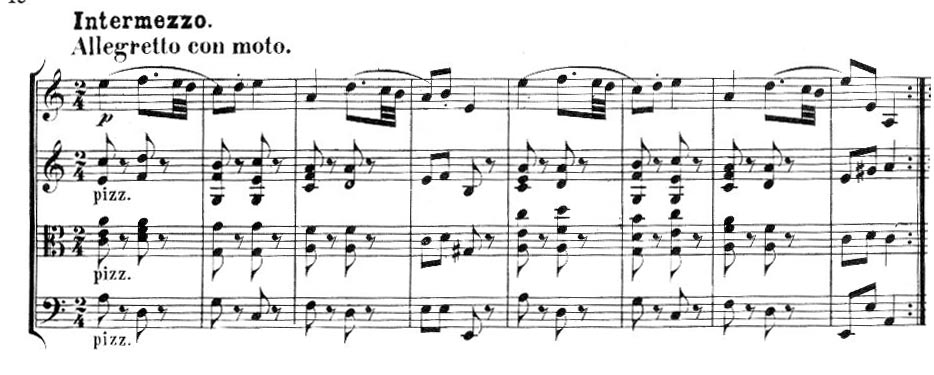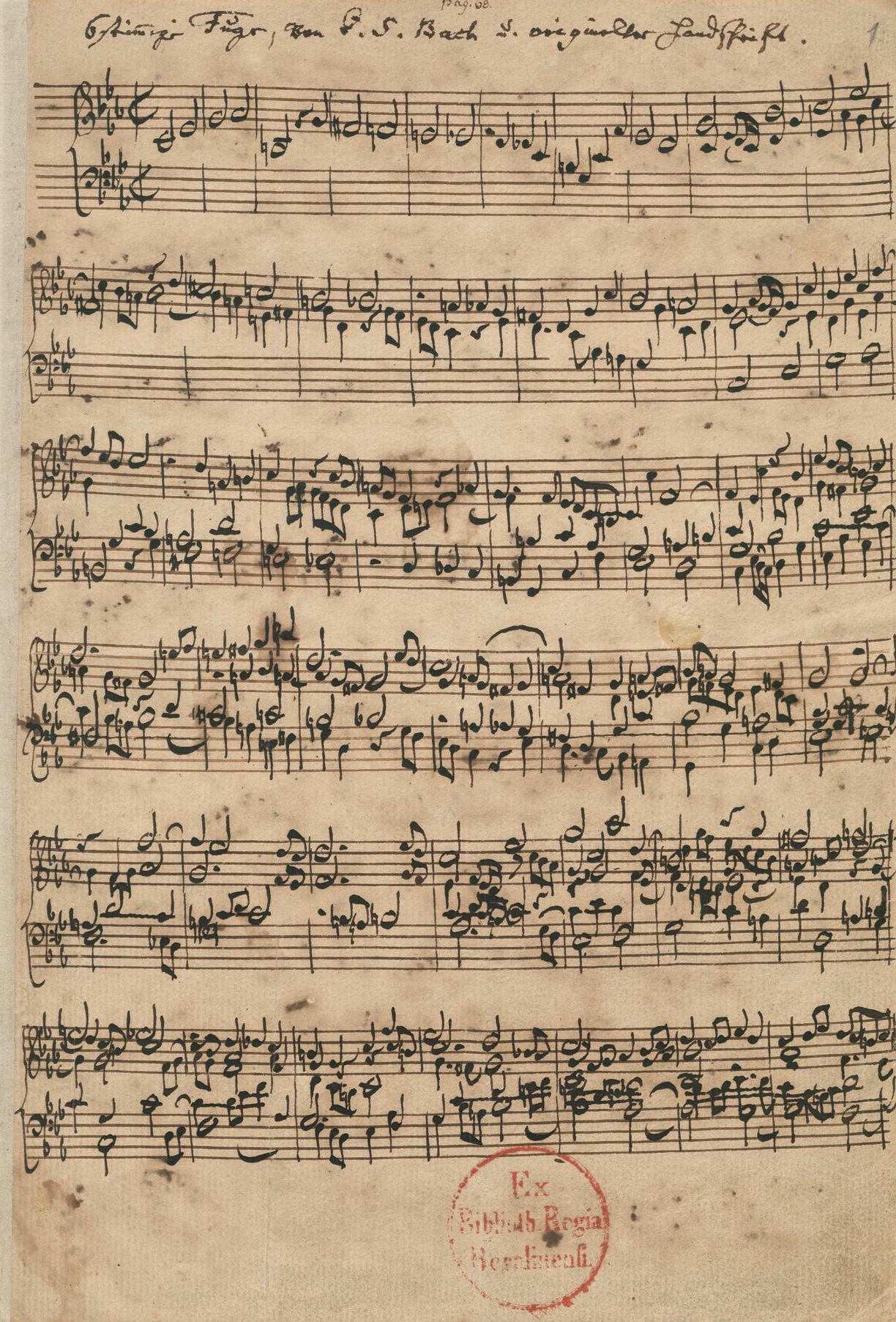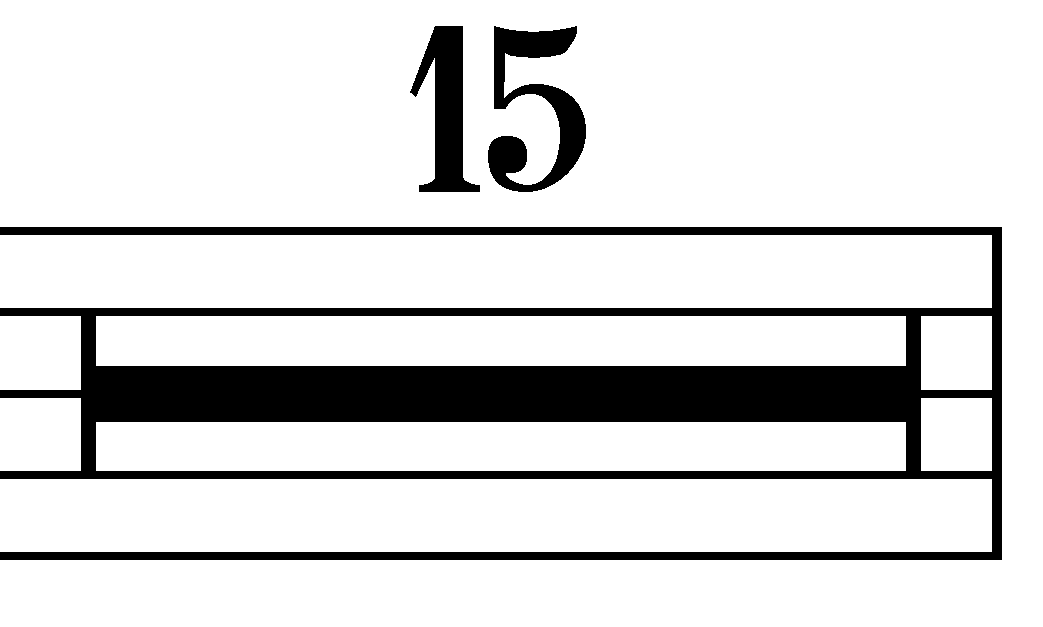|
Prelude And Fugue In C-sharp Major, BWV 872
Prelude and Fugue in C-sharp major, Bach-Werke-Verzeichnis, BWV 872, is a keyboard composition written by Johann Sebastian Bach. It is the third prelude and fugue in the second book of ''The Well-Tempered Clavier'', a series of 48 Prelude (music), preludes and fugues in every major and minor key. Analysis Prelude The Prelude (music), prelude is in common time and has 50 Bar (music), measures, built upon the characteristic arpeggios similar to the Prelude and Fugue in C major, BWV 846, famous C major prelude from the first book of ''The Well-Tempered Clavier'' until the fugato. The arpeggios ends at 25, and the fugato starts, which uses the time signature of . It has three Part (music), voices. Fugue The fugue has three voices and 35 measures. The subject is simply made from notes from the major triad, but has mutated many times throughout the whole fugue. References Bibliography * * {{Compositions for Organ, Keyboard and Lute by Johann Sebastian Bach ... [...More Info...] [...Related Items...] OR: [Wikipedia] [Google] [Baidu] |
Bach-Werke-Verzeichnis
The (, ; BWV) is a Catalogues of classical compositions, catalogue of compositions by Johann Sebastian Bach. It was first published in 1950, edited by Wolfgang Schmieder. The catalogue's second edition appeared in 1990 and the third edition in 2022.Bach-Werke-Verzeichnis (BWV). Thematisch-systematisches Verzeichnis der musikalischen Werke von Johann Sebastian Bach, 3rd expanded edn. Edited by Christine Blanken, Christoph Wolff and Peter Wollny The catalogue groups compositions by genre. Even within a genre, compositions are not necessarily collated chronologically. In part this reflects that fact that some compositions cannot be dated. However, an approximate or precise date can be assigned to others: for example, BWV 992 was composed many years before BWV 1. Alternative classifications The BWV classification is open to criticism, and the Bach scholar Christoph Wolff was involved in the design of an alternative, the Bach Compendium. Publication of the Bach Compendiu ... [...More Info...] [...Related Items...] OR: [Wikipedia] [Google] [Baidu] |
Arpeggio
An arpeggio () is a type of Chord (music), chord in which the Musical note, notes that compose a chord are individually sounded in a progressive rising or descending order. Arpeggios on keyboard instruments may be called rolled chords. Arpeggios may include all notes of a musical scale, scale or a partial set of notes from a scale, but must contain notes of at least three Pitch (music), pitches (two-pitch sequences are known as Trill (music), trills). Arpeggios may sound notes within a single octave or span multiple octaves, and the notes may be sustained and overlap or be heard separately. An arpeggio for the chord of C major going up two octaves would be the notes (C, E, G, C, E, G, C). In musical notation, a very rapid arpeggiated chord may be written with a wavy vertical line in front of the chord. Typically these are read as to be played from the lowest to highest note, though composers may specify a high to low sequence by adding an arrow pointing down. Arpeggios ... [...More Info...] [...Related Items...] OR: [Wikipedia] [Google] [Baidu] |
Augener & Co
Augener & Co. was a music-publishing business in London, established by George Augener (1830–1915), originally "Georg", a German national born in Fechenheim near Frankfurt am Main, who had previously been an apprentice with André's publishing house in Offenbach. History The business was founded at 86 Newgate Street, London, in 1855. Later on, London branch warehouses were established at 1 Foubert Place, 22 Golden Square, 81 The Quadrant, Regent Street, and in Brighton at 1 Palace Place. By a change of partnership on 26 February 1887, the warehouse in the Quadrant was transferred to Wesley S. B. Woolhouse, while the general business with this exception remaining George Augener's. In the late nineteenth century, Augener & Co.'s catalogue contained upwards of 6,000 works, of which nearly 1,000 were cheap volumes; among these was a comprehensive collection of pianoforte classics edited by Ernst Pauer, as well as an important series of educational works edited by him, by John Far ... [...More Info...] [...Related Items...] OR: [Wikipedia] [Google] [Baidu] |
Major Triad
In music theory, a major chord is a chord that has a root, a major third, and a perfect fifth. When a chord comprises only these three notes, it is called a major triad. For example, the major triad built on C, called a C major triad, has pitches C–E–G: In harmonic analysis and on lead sheets, a C major chord can be notated as C, CM, CΔ, or Cmaj. A major triad is represented by the integer notation . A major triad can also be described by its intervals: the interval between the bottom and middle notes is a major third, and the interval between the middle and top notes is a minor third. By contrast, a minor triad has a minor third interval on the bottom and major third interval on top. They both contain fifths, because a major third (four semitones) plus a minor third (three semitones) equals a perfect fifth (seven semitones). Chords that are constructed of consecutive (or "stacked") thirds are called ''tertian.'' In Western classical music from 1600 to 1820 and in ... [...More Info...] [...Related Items...] OR: [Wikipedia] [Google] [Baidu] |
Part (music)
A part in music refers to a component of a musical composition. Because there are multiple ways to separate these components, there are several contradictory senses in which the word "part" is used: * any individual melody (or voice), whether vocal or instrumental, that can be abstracted as continuous and independent from other notes being performed simultaneously in polyphony. Within the music played by a single pianist, one can often identify outer parts (the top and bottom parts) or an inner part (those in between). On the other hand, within a choir, "outer parts" and "inner parts" would refer to music performed by different singers. (See ) * the musical instructions for any individual instrument or voice (often given as a handwritten, printed, or digitized document) of sheet music (as opposed to the full score which shows all parts of the ensemble in the same document). A musician's part usually does not contain instructions for the other players in the ensemble, only ... [...More Info...] [...Related Items...] OR: [Wikipedia] [Google] [Baidu] |
Time Signature
A time signature (also known as meter signature, metre signature, and measure signature) is an indication in music notation that specifies how many note values of a particular type fit into each measure ( bar). The time signature indicates the meter of a musical movement at the bar level. In a music score the time signature appears as two stacked numerals, such as (spoken as ''four–four time''), or a time symbol, such as (spoken as ''common time''). It immediately follows the key signature (or if there is no key signature, the clef symbol). A mid-score time signature, usually immediately following a barline, indicates a change of meter. Most time signatures are either simple (the note values are grouped in pairs, like , , and ), or compound (grouped in threes, like , , and ). Less common signatures indicate complex, mixed, additive, and irrational meters. Time signature notation Most time signatures consist of two numerals, one stacked above the other: * ... [...More Info...] [...Related Items...] OR: [Wikipedia] [Google] [Baidu] |
Fugato
In classical music, a fugue (, from Latin ''fuga'', meaning "flight" or "escape""Fugue, ''n''." ''The Concise Oxford English Dictionary'', eleventh edition, revised, ed. Catherine Soanes and Angus Stevenson (Oxford and New York: Oxford University Press, 2006). ) is a contrapuntal, polyphonic compositional technique in two or more voices, built on a subject (a musical theme) that is introduced at the beginning in imitation (repetition at different pitches), which recurs frequently throughout the course of the composition. It is not to be confused with a ''fuguing tune'', which is a style of song popularized by and mostly limited to early American (i.e. shape note or "Sacred Harp") music and West Gallery music. A fugue usually has three main sections: an exposition, a development, and a final entry that contains the return of the subject in the fugue's tonic key. Fugues can also have episodes, which are parts of the fugue where new material often based on the subject is heard ... [...More Info...] [...Related Items...] OR: [Wikipedia] [Google] [Baidu] |
Prelude And Fugue In C Major, BWV 846
Prelude may refer to: Music *Prelude (music), a musical form * Prelude (band), an English-based folk band * Prelude Records (record label), a former New York-based dance independent record label *Chorale prelude, a short liturgical composition for organ using a chorale as its basis Albums and songs * ''Prelude'' (Jack McDuff album), a 1963 album by jazz organist Brother Jack McDuff * ''Prelude'' (Deodato album), a 1973 album by Eumir Deodato * ''Prelude'' (The Moody Blues album), a 1987 album by The Moody Blues * ''Prelude'' (EP), a 2017 EP by April *''Prelude'', a 2021 EP by Lauren Jauregui *"Prelude", a song by Flobots from '' Flobots Present... Platypus'' *"Prelude", a song by Hieroglyphics from '' Full Circle'' *"Prelude", an instrumental by Kate Bush from '' Aerial'' *"Prelude", a song by Killswitch Engage from ''Killswitch Engage'' (2000 album) *"Prelude", a song by the Oh Hellos from '' Dear Wormwood'' *"Prelude", a song by Pete Townshend from '' All the Best Cowboys Have ... [...More Info...] [...Related Items...] OR: [Wikipedia] [Google] [Baidu] |
Bar (music)
In musical notation, a bar (or measure) is a segment of music bounded by vertical lines, known as bar lines (or barlines), usually indicating one or more recurring beats. The length of the bar, measured by the number of note values it contains, is normally indicated by the time signature. Types of bar lines Regular bar lines consist of a thin vertical line extending from the top line to the bottom line of the staff, sometimes also extending between staves in the case of a grand staff or a family of instruments in an orchestral score. A ''double bar line'' (or ''double bar'') consists of two single bar lines drawn close together, separating two sections within a piece, or a bar line followed by a thicker bar line, indicating the end of a piece or movement. Note that ''double bar'' refers not to a type of ''bar'' (i.e., measure), but to a type of ''bar line''. Typically, a double bar is used when followed by a new key signature, whether or not it marks the beginning of a ne ... [...More Info...] [...Related Items...] OR: [Wikipedia] [Google] [Baidu] |
Johann Sebastian Bach
Johann Sebastian Bach (German: Help:IPA/Standard German, [ˈjoːhan zeˈbasti̯an baχ]) ( – 28 July 1750) was a German composer and musician of the late Baroque music, Baroque period. He is known for his prolific output across a variety of instruments and forms, including the orchestral ''Brandenburg Concertos''; solo instrumental works such as the Cello Suites (Bach), cello suites and Sonatas and Partitas for Solo Violin (Bach), sonatas and partitas for solo violin; keyboard works such as the ''Goldberg Variations'' and ''The Well-Tempered Clavier''; organ works such as the ' and the Toccata and Fugue in D minor, BWV 565, Toccata and Fugue in D minor; and choral works such as the ''St Matthew Passion'' and the Mass in B minor. Since the 19th-century Reception of Johann Sebastian Bach's music, Bach Revival, he has been widely regarded as one of the greatest composers in the history of Western music. The Bach family had already produced several composers when Joh ... [...More Info...] [...Related Items...] OR: [Wikipedia] [Google] [Baidu] |
Common Time
A time signature (also known as meter signature, metre signature, and measure signature) is an indication in music notation that specifies how many note values of a particular type fit into each measure ( bar). The time signature indicates the meter of a musical movement at the bar level. In a music score the time signature appears as two stacked numerals, such as (spoken as ''four–four time''), or a time symbol, such as (spoken as ''common time''). It immediately follows the key signature (or if there is no key signature, the clef symbol). A mid-score time signature, usually immediately following a barline, indicates a change of meter. Most time signatures are either simple (the note values are grouped in pairs, like , , and ), or compound (grouped in threes, like , , and ). Less common signatures indicate complex, mixed, additive, and irrational meters. Time signature notation Most time signatures consist of two numerals, one stacked above the other: * The '' ... [...More Info...] [...Related Items...] OR: [Wikipedia] [Google] [Baidu] |
Major And Minor
In Western music, the adjectives major and minor may describe an interval, chord, scale, or key. A composition, movement, section, or phrase may also be referred to by its key, including whether that key is major or minor. The words derive from Latin words meaning "large" and "small," and were originally applied to the intervals between notes, which may be larger or smaller depending on how many semitones (half-steps) they contain. Chords and scales are described as major or minor when they contain the corresponding intervals, usually major or minor thirds. Intervals A major interval is one semitone larger than a minor interval. The words ''perfect'', ''diminished'' and ''augmented'' are also used to describe the quality of an interval. Only the intervals of a second, third, sixth, and seventh (and the compound intervals based on them) may be major or minor (or, rarely, diminished or augmented). Unisons, fourths, fifths, and octaves and their compound interval must be p ... [...More Info...] [...Related Items...] OR: [Wikipedia] [Google] [Baidu] |





